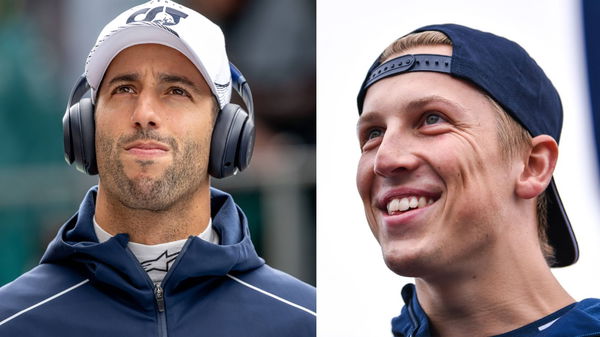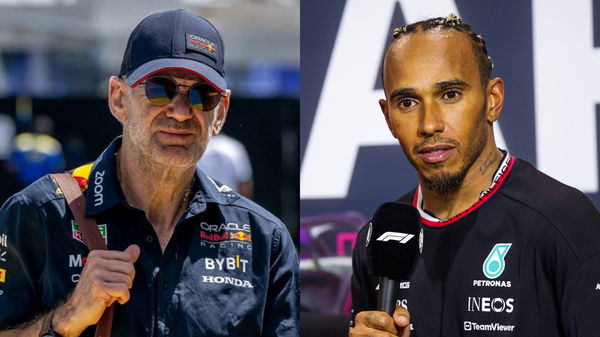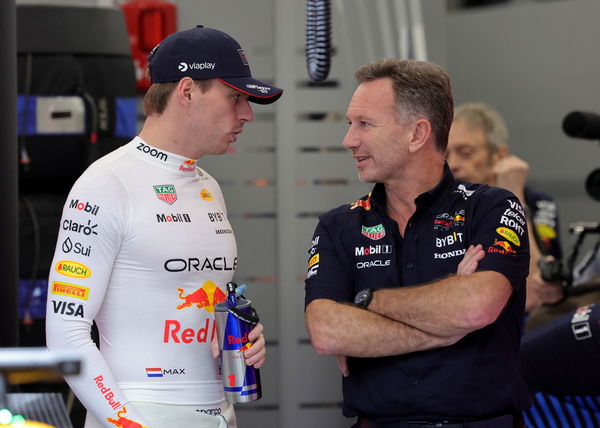How Many Gears Are There in a Formula 1 Car?

Follow Us

via Reuters
Formula One F1 – Belgian Grand Prix – Spa-Francorchamps, Spa, Belgium – August 26, 2022 Mercedes’ George Russell during practice REUTERS/Johanna Geron
F1 cars are truly bohemian in performance, with speeds averaging above 180-200 miles an hour. The roar of the engine, the sleekness of the chassis, and the mind-boggling aerodynamic features make it a beast that can not be compared to any other automotive in the industry.
Dare to blink an eye? And you’ll miss the V6 engine fly past you. Over the years, with multiple technological advancements, these F1 cars have come a long way and are distinct from what we once knew as racing cars. The engine, the gearbox, the electronics system, everything has a new face as compared to what once was part of the F1 grid.
ADVERTISEMENT
Article continues below this ad
Even the number of gears available to the pilot of this vehicle is more than it used to be, which has made a substantial difference in how these drivers approach different corners of a track. Without further due, let’s dive into the number of gears in an F1 car.
Gears in an F1 car
The technical top speed of F1 cars is 360KPH (roughly 223MPH). However, the fastest race speed of an F1 recording during an official Grand Prix was 372.5km/h (231.4mph).
An F1 car changes gears through a semi-automatic sequential transmission, and the onboard computer does the rest of the job for an F1 driver. The steering wheels of this modern-day machinery feature paddle shifters on its rear, using which the driver can select the left paddle to shift down or the right-hand paddle to shift up.
Trending

Daniel Ricciardo To Be Replaced by Liam Lawson After Miami, F1 Pundit Dishes Out Harsh Verdict After Australian’s “Amateur Mistake”
April 17, 2024 11:14 AM EDT

Adrian Newey Hits Out at Climate Activist Lewis Hamilton’s Fuel Protest, Desperate to See V10 Engines Again
April 15, 2024 12:35 PM EDT

Who are Zhou Guanyu’s Parents? Everything We Know About The Chinese Driver’s Family
April 16, 2024 02:07 PM EDT

Taylor Swift’s Tortured Poets Department Sends F1 Fans Into a Frenzy: “Its a Fernando Reference”
April 19, 2024 09:43 AM EDT

Max Verstappen “On Ice” as Return to China Goes Badly for Christian Horner and Co
April 19, 2024 10:58 AM EDT
Get instantly notified of the hottest F1 stories via Google! Click on Follow Us and Tap the Blue Star.

Follow Us
Presently, in the modern 1.6L V6 turbo hybrid engines in place, the number of gears has increased from the old V8s. The previous generation of F1 cars featured seven gears, but since 2014, F1 cars have eight forward gears and 1 reverse gear.
So next year there will be 8 gears in an #F1 car? #OhComeOn pic.twitter.com/9FRkrQ14Df
— Elie Rizk (@ElieRizkF1) December 18, 2013
Generally, the F1 superstars use these gears of an F1 car, the same way as you would do on the road. For slow-speed corners like a hairpin, the car can drop to second/third gear, for medium-speed corners the optimal gear choice can be fourth gear, and upwards of fifth gear helps them deliver performance on long straights and super-fast complexes.

What Is Aquaplaning In F1?
Remarkably, it is a common feat to see an F1 driver perform over 2,000 gear changes in a race distance, which is roughly around 2 hours.
Do F1 cars have a clutch?
When driving a manual transmission vehicle, you must have encountered an additional pedal featured alongside the accelerator and the brake, which is domineered by your left foot. The clutch forms a link between the engine and transmission and further transmits the power of the engine to the wheels of the vehicle.
That’s what the steering wheel of an #F1 car looks like up close. Just look at the number of buttons and switches! The clutch is ALSO a paddle behind the wheel and is used only at the time of taking off from standstill. On the go you don’t need the clutch at all. @RenaultSportF1 pic.twitter.com/bkfpLhGI8E
— OVERDRIVE (@odmag) July 25, 2018
F1 cars also feature a clutch, but it is not alongside the accelerator and brake pedals and is not engaged using the feet. An F1 clutch is carved out of a multi-plate carbon design that has a diameter smaller than 3.9 inches, weighs lighter than 2.2 pounds, and handles a car that produces 720 bhp.
Watch This Story: Drivers To Be Granted A Citizenship In Multiple Countries
Notably, when launching from a standstill or neutral into first gear, the driver operates the clutch manually using a lever mounted on the back of the steering wheel to get the car into motion.
The Reverse gear of an F1 car
Shifting through gears to reach a top speed of 200 miles an hour can sometimes see a driver run out of track and find himself off-road. During these times, the questions arise: can these F1 cars reverse and join the track? The short answer is yes, but the procedure to put them in the reverse gear is not short at all.
If you've ever wondered how to get an F1 car into reverse…
⏩ Select first gear
⏩ Keep the clutch held
⏩ Press neutral
⏩ Then press and hold reverse— Sky Sports F1 (@SkySportsF1) June 18, 2022
ADVERTISEMENT
Article continues below this ad
The provision of the reverse gear is available to the drivers and compulsion in the rulebook, but these nimble cars are not designed to go backward which hardly see them using the reverse gear. Due to this, drivers at times face real difficulties shifting to reverse.
Normally, the pilot behind the car’s wheel performs a 180° spin instead of engaging the reverse gear. One important point to remember is to never use this helping hand available to the driver in the pit lane, as reversing in that part of the track leads to a time penalty. In such a circumstance, the team is supposed to wheel back its driver back to the garage.
ADVERTISEMENT
Article continues below this ad

Why F1’s Tire Blankets Will Soon Be Old News With Game-Changing Ban
The FIA standardized the reverse gear for safety purposes and also to minimize the involvement of Marshalls in a Grand Prix.
Edited by:
Ranvijay Singh
